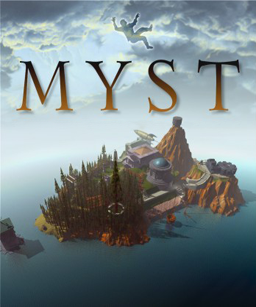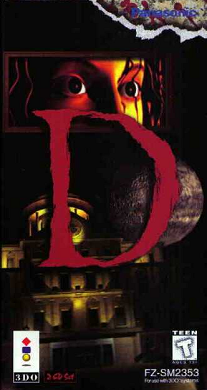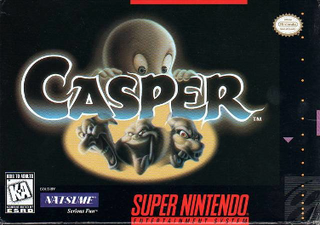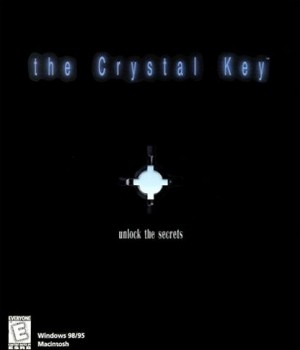
Myst is a graphic adventure designed by the Miller brothers, Robyn and Rand. It was developed by Cyan, Inc., published by Broderbund, and initially released in 1993 for the Macintosh. In the game, the player travels via a special book to a mysterious island called Myst. From there, solving puzzles allows the player to travel to other worlds ("Ages"), which reveal the backstory of the game's characters and help the player make the choice of whom to aid. The player interacts with objects and walks to different locations by clicking on pre-rendered imagery.

Riven is a puzzle adventure video game. It is the sequel to Myst and second in the Myst series of games. Developed by Cyan Worlds, it was initially published by Red Orb Entertainment, a division of Broderbund. Riven was distributed on five compact discs and released on October 31, 1997, in North America; it was later released on a single DVD-ROM on August 17, 1998, with improved audio and a fourteen-minute "making-of" video. In addition to the PC versions, Riven has been ported to several other platforms.

Myst III: Exile is the third title in the Myst series of graphic adventure puzzle video games. While the preceding games in the series, Myst and Riven, were produced by Cyan Worlds and published by Brøderbund, Exile was developed by Presto Studios and published by Ubi Soft. The game was released on four compact discs for both Mac OS and Microsoft Windows on May 8, 2001; versions for the Xbox and PlayStation 2 were released in late 2002. A single-disc DVD version was later released for Windows and Mac OS.

Myst IV: Revelation is an adventure video game, the fourth installment in the Myst series, developed and published by Ubisoft. Like Myst III: Exile, Revelation combines pre-rendered graphics with digital video, but also features real-time 3D effects for added realism. The plot of Revelation follows up on plot details from the original Myst. The player is summoned by Atrus, a man who creates links to other worlds known as Ages by writing special linking books. Almost twenty years earlier, Atrus' two sons nearly destroyed all of his books and were imprisoned; Atrus now wishes to see if his sons' imprisonment has reformed them. The player travels to each brother's prison, in an attempt to recover Atrus' daughter Yeesha from the brothers' plot.

Discworld is a point-and-click adventure game, developed by Teeny Weeny Games and Perfect 10 Productions, and based upon Terry Pratchett's novels of the same name. Players assume the role of Rincewind the "wizzard", voiced by Eric Idle, as he becomes involved in exploring the Discworld for the means to prevent a dragon terrorising the city of Ankh-Morpork. The game's story borrows elements from several Discworld novels, with its central plot loosely based on the events in Guards! Guards!

Pyst is an adventure computer game released in October 1996. It was created as a parody of the highly successful adventure game Myst. Pyst was written by Peter Bergman, a co-founder of the Firesign Theatre, and was published by Parroty Interactive, with Bergman, Stallone, Inc. as co-publisher. Mindscape began distributing the game on August 20, 1997. The parody features full motion video of actor John Goodman as "King Mattruss", the ruler of "Pyst Island". Versions of the game were produced for both the Windows PC and Apple Macintosh operating systems.

Alone in the Dark 2 is the 1993 survival horror video game developed and published by Infogrames. It is the second installment in the Alone in the Dark series. It was ported to the PC-98 and FM Towns in 1994 and to the 3DO Interactive Multiplayer in 1995 under the same name, and to the Sega Saturn and PlayStation in 1996 as Alone in the Dark: Jack is Back in Europe, and renamed as Alone in the Dark: One-Eyed Jack's Revenge in North America.

Myst V: End of Ages is a 2005 adventure video game, the fifth installment in the Myst series. The game was developed by Cyan Worlds, published by Ubisoft, and released for Macintosh and Windows PC platforms in September 2005. As in previous games in the series, End of Ages's gameplay consists of navigating worlds known as "Ages" via the use of special books and items which act as portals.

D is a horror-themed interactive movie and adventure game developed by Warp and directed by Kenji Eno. It was first published by Panasonic for the 3DO Interactive Multiplayer in 1995, later being ported to the Sega Saturn, PlayStation, and MS-DOS. The story follows Laura Harris as she goes to investigate a hospital after learning her father went on a mass murdering spree and barricaded himself inside. The hospital morphs into a castle upon her arrival, which she must explore to find her father. The player controls Laura through computer generated full-motion video (FMV) sequences, and must complete the game within two hours without a save or pause function.

Atlantis: The Lost Tales is a 1997 fantasy adventure video game developed and published by Cryo Interactive Entertainment. Interplay Productions published the game in North America, where it released on September 30, 1997. The game is named after its initial and most important setting, Atlantis. It is the first in a Myst-like series, and was followed by Atlantis II, Atlantis III: The New World, Atlantis Evolution and The Secrets of Atlantis: The Sacred Legacy.
SegaSoft, originally headquartered in Redwood City, California and later San Francisco, was a joint venture by Sega and CSK, created in 1995 to develop and publish games for the PC and Sega Saturn, primarily in the North American market.

Frankenstein: Through the Eyes of the Monster is a point-and-click adventure video game that stars Tim Curry as Dr. Frankenstein, and has the player controlling a newly created Frankenstein monster. Other cast members include Robert Rothrock as the voice of the monster, Rebecca Wink as villager Sara, and Amanda Fuller as Gabrielle, the monster's daughter. It used full motion video clips and 3D CGI graphics similar to Myst. The game was developed by Amazing Media and published by Interplay Entertainment Corp for the PC in 1995 and for the Sega Saturn in 1997. The game was given a "Teen" rating by the Entertainment Software Rating Board, but was originally rated as K-A. A port for the Atari Jaguar was in development but never released.

Baku Baku, released in Japan as Baku Baku Animal, is a falling block puzzle arcade game released by Sega in 1995. The game is dedicated as Sega's first ever Network Compatible PC Game. A Sega NetLink compatible version of the game was also announced, but never released.

Casper is a series of action-adventure games based on the 1995 film of the same name. Two different games were released in 1996 and 1997 for the Super Nintendo Entertainment System, by different publishers, in different regions. A third game was released for the 3DO, Sega Saturn, PlayStation, and Game Boy Color, published by Interplay Productions. There was also a Game Boy game developed by Bonsai. A PC game, Casper: The Interactive Adventure, and a Game Boy Advance game, simply titled Casper, were released in 1997 and 2002 respectively serving as sequels. A hack/remake of the PlayStation version was released by an independent game developer for free under the handle Retro Active Games in 2021. It follows the same story beats, but with entirely new puzzles and layouts.

Atlantis III: The New World,, is a 2001 fantasy adventure video game developed and published by Cryo Interactive, with Dreamcatcher Interactive publishing the game in North America. David Rhodes composed the musical score. It is the third game in the Atlantis series by Cryo, as well as the last one made before Cryo's closure. It was followed by Atlantis Evolution in 2004.

The Crystal Key is a 1999 graphic adventure video game developed by Earthlight Productions and published by DreamCatcher Interactive. A work of science fiction, it casts the player as an interstellar explorer on a quest to save Earth from Ozgar, a malevolent alien conqueror. The player uses portals to traverse multiple planets, including desert and jungle worlds, while collecting items and solving puzzles. The Crystal Key was conceived by John and Jennifer Matheson in the mid-1990s, and it underwent a five-year creation process hampered by problems with its technology. It was signed by DreamCatcher as part of the publisher's strategic push into the adventure game genre.
An adventure game is a video game genre in which the player assumes the role of a protagonist in an interactive story, driven by exploration and/or puzzle-solving. The genre's focus on story allows it to draw heavily from other narrative-based media, such as literature and film, encompassing a wide variety of genres. Most adventure games are designed for a single player, since the emphasis on story and character makes multiplayer design difficult. Colossal Cave Adventure is identified as the first such adventure game, first released in 1976, while other notable adventure game series include Zork, King's Quest, Monkey Island, Syberia, and Myst.

Warcraft II: Tides of Darkness is a fantasy real-time strategy computer game developed by Blizzard Entertainment and released for DOS in 1995 and Mac OS in 1996 by Blizzard's parent, Davidson & Associates. A sequel to Warcraft: Orcs & Humans, the game was met with positive reviews and won most of the major PC gaming awards in 1996. In 1996, Blizzard released an expansion pack, Warcraft II: Beyond the Dark Portal, for DOS and Mac OS, and a compilation, Warcraft II: The Dark Saga, for the PlayStation and Sega Saturn. The Battle.net edition, released in 1999, included Warcraft II: Beyond the Dark Portal, provided Blizzard's online gaming service, and replaced the MS-DOS version with a Windows one.

Karma: Curse of the 12 Caves is a 1995 FMV adventure game. In 1998, DreamCatcher Interactive re-released the game as Quest for Karma. The game was released in Japan for PlayStation and Sega Saturn as Takuramakan.

Nemesis: The Wizardry Adventure is a 1996 adventure and role-playing video game developed and published by Sir-Tech. It is a spin-off of the Wizardry series of games. Ports for Sega Saturn and Microsoft Windows were released in Japan in 1998.


















